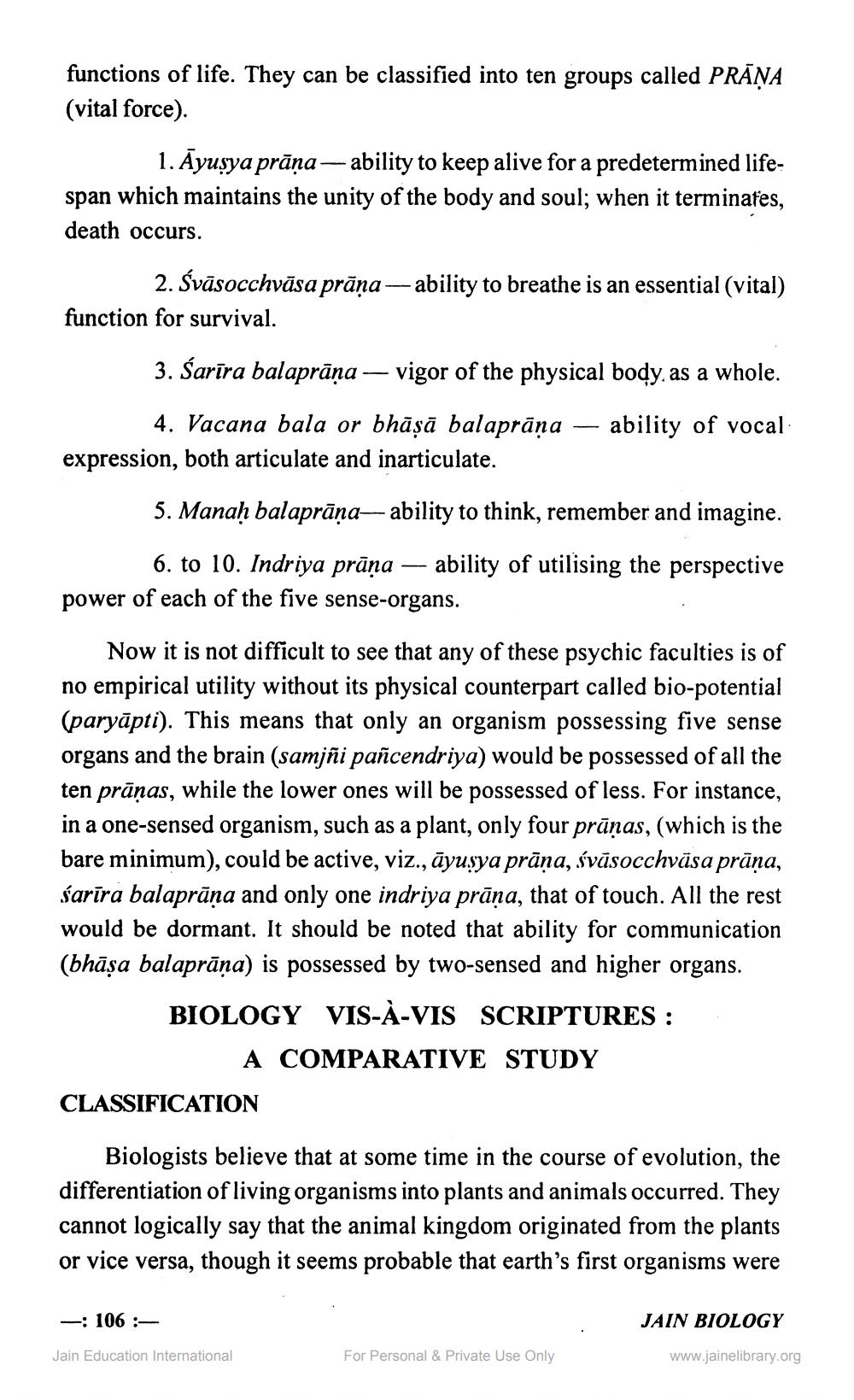________________
functions of life. They can be classified into ten groups called PRĀŅA (vital force).
1. Ayusya prāņa-- ability to keep alive for a predetermined lifespan which maintains the unity of the body and soul; when it terminafes, death occurs.
2. Svāsocchvāsa prāņa - ability to breathe is an essential (vital) function for survival.
3. Sarīra balaprāņa — vigor of the physical body, as a whole.
4. Vacana bala or bhāṣā balaprāna – ability of vocal: expression, both articulate and inarticulate.
5. Manah balaprāņa- ability to think, remember and imagine.
6. to 10. Indriya prāņa — ability of utilising the perspective power of each of the five sense-organs.
Now it is not difficult to see that any of these psychic faculties is of no empirical utility without its physical counterpart called bio-potential (paryāpti). This means that only an organism possessing five sense organs and the brain (samjñi pañcendriya) would be possessed of all the ten prāņas, while the lower ones will be possessed of less. For instance, in a one-sensed organism, such as a plant, only four prāṇas, (which is the bare minimum), could be active, viz., āyusya prāņa, śvāsocchvāsa prāņa, śarīra balaprāna and only one indriya prāņa, that of touch. All the rest would be dormant. It should be noted that ability for communication (bhāșa balaprāņa) is possessed by two-sensed and higher organs.
BIOLOGY VIS-À-VIS SCRIPTURES :
A COMPARATIVE STUDY
CLASSIFICATION
Biologists believe that at some time in the course of evolution, the differentiation of living organisms into plants and animals occurred. They cannot logically say that the animal kingdom originated from the plants or vice versa, though it seems probable that earth's first organisms were
—
106 :
JAIN BIOLOGY
Jain Education International
For Personal & Private Use Only
www.jainelibrary.org




